Electrons emitted thermionically from hot metal surfaces can be collected at cold anodes connected with a load thus forming a thermionic energy conversion device (with Carnot-limited efficiency: hot cathodes are needed for large temperature differences → sunlight collectors). Thermionic emitters were also used as cathodes in the first electron microscopes.
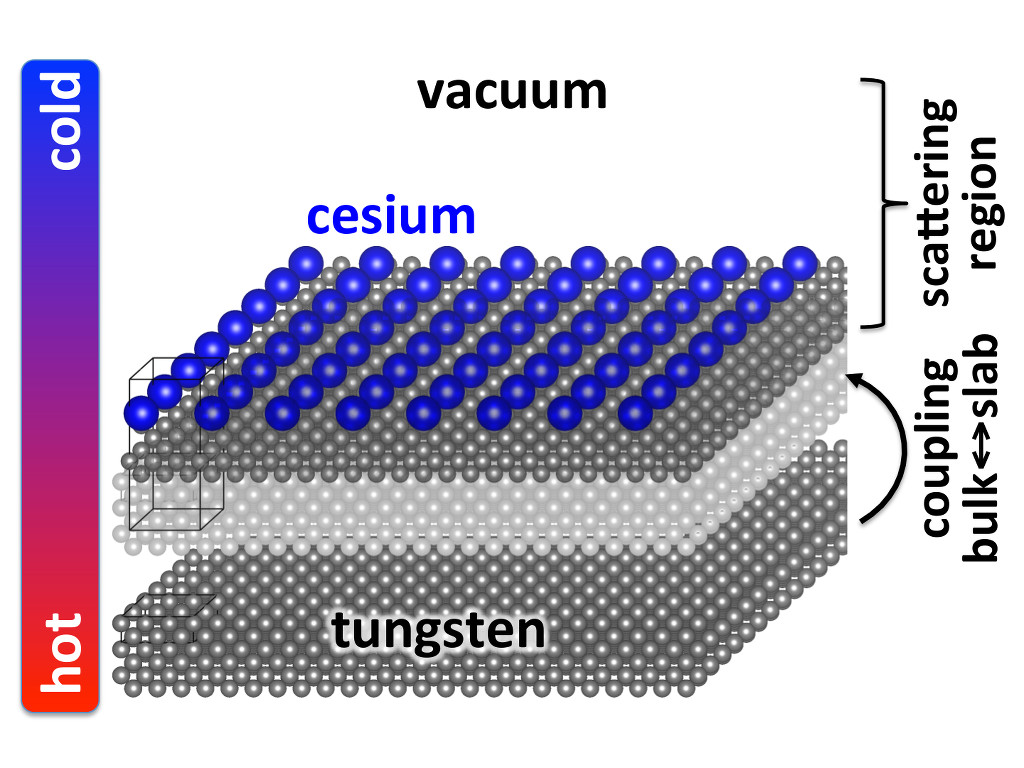
Prediction of Thermionic Emission Currents
At the theoretical level, thermionic emission had been treated as a 1D problem (directions parallel to the metal surface averaged out) so that the semi-classical WKB approach could be applied. Here, we have formulated a non-equilibrium Green’s function description of thermionic emission. Similar to the description of transport through molecular junctions, the metallic states are expanded in a local atomic basis. Such a basis is not suited for vacuum states, which are expanded here in a mixed real space+plane wave basis instead [details: Voss et al., J. Chem. Phys. 138, 204701 (2013)].
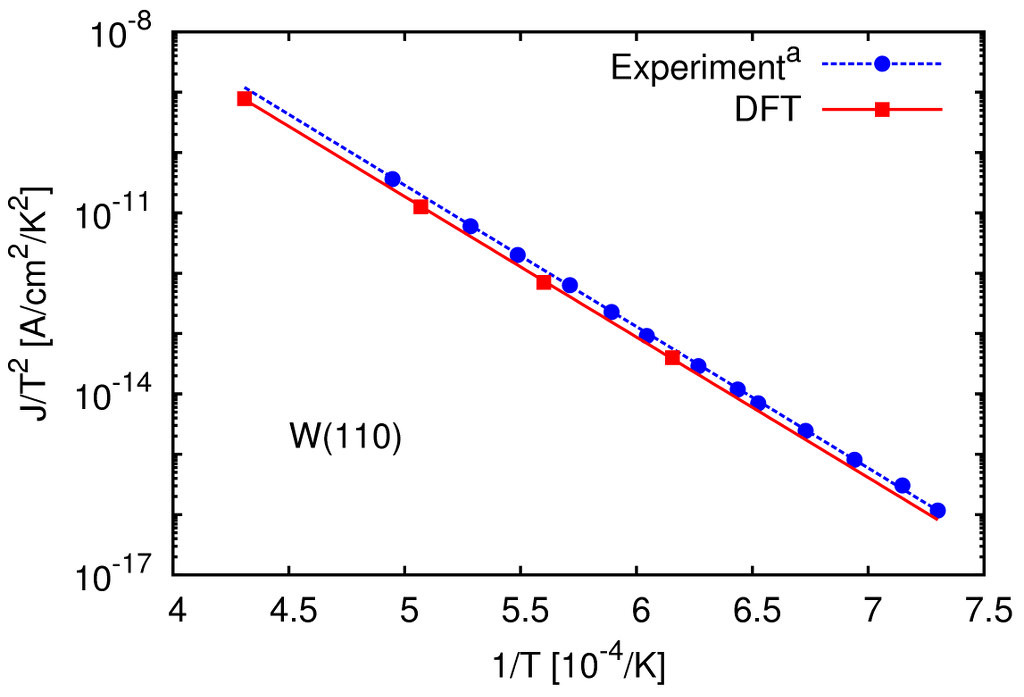
This method has been successfully benchmarked against experiments (see e.g. figure above or more examples here), and has also been used to computationally search for efficient thermionic emitter materials. A heterostructure modification of LaB6 is found to be both thermodynamically stable, have a low work function, and also low tunneling barriers (properties that rarely coexist).
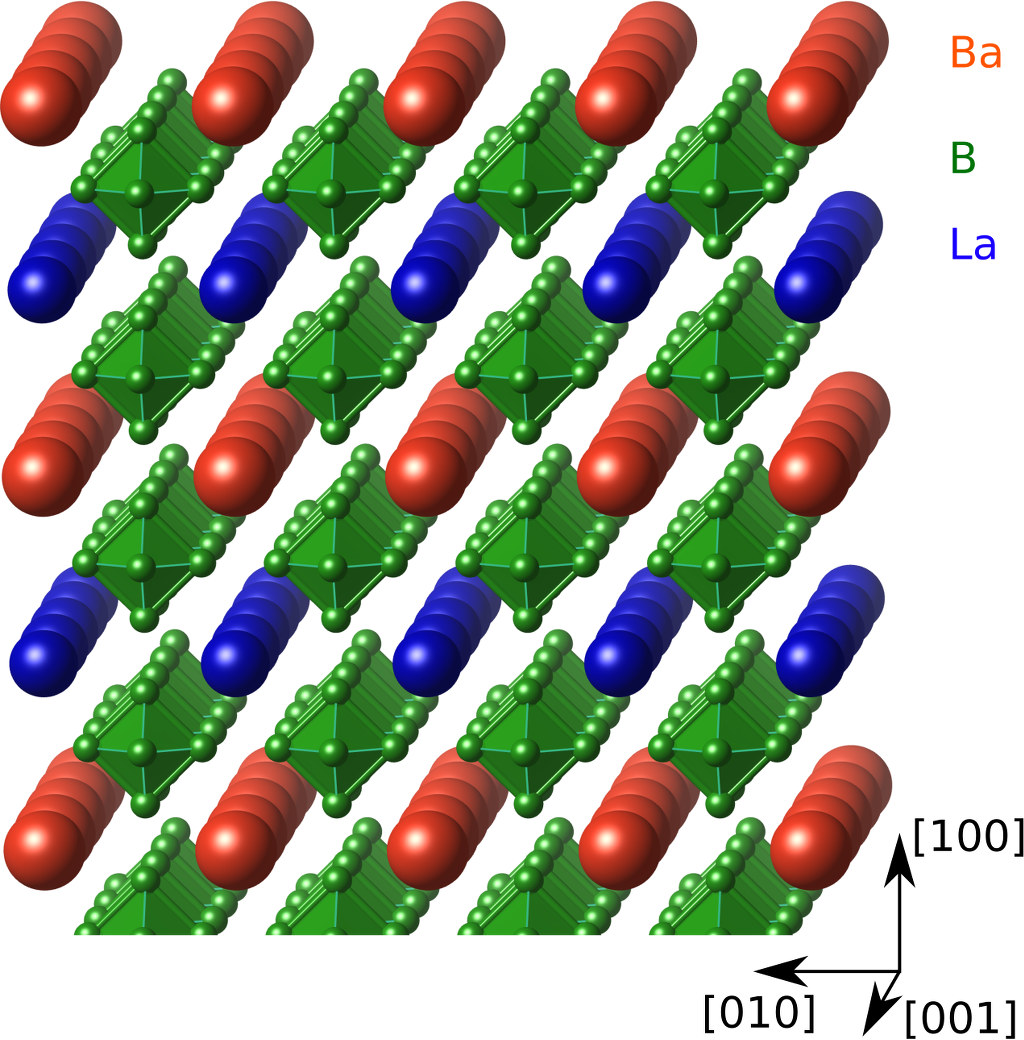
This LaBaB12 heterostructure has a lower work function ($\sim1.9\,$eV) than either LaB6 or BaB6 and also low tunneling barriers leading to enhanced thermionic emission currents [Voss et al., Phys. Rev. Applied 2, 024004 (2014)]:
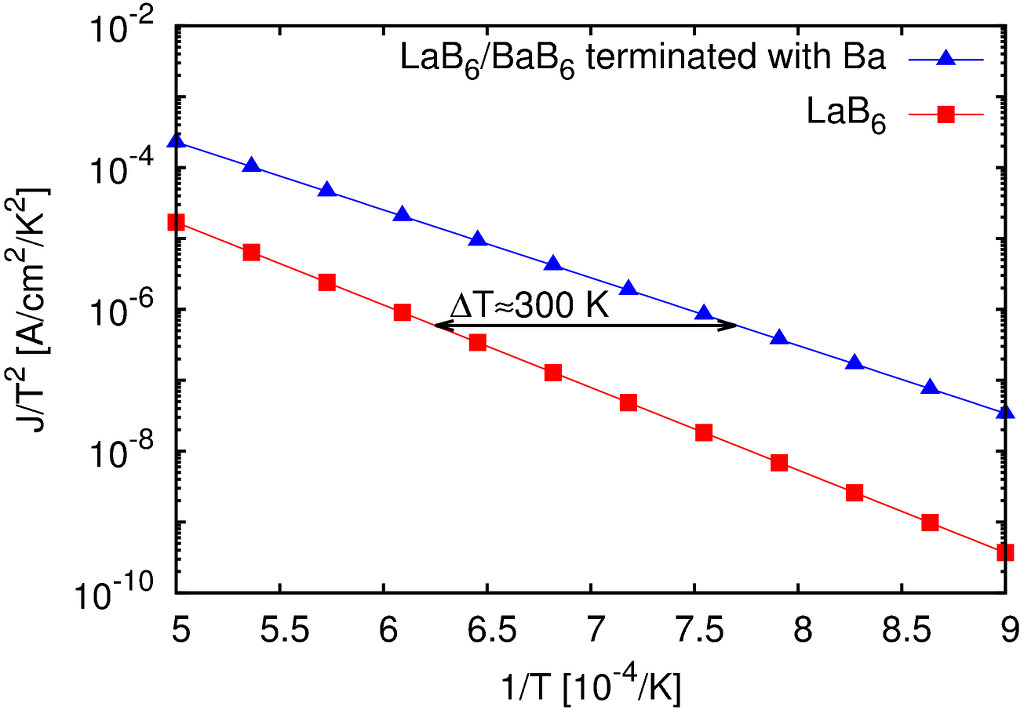
The lowered work function of $\sim1.9\,$eV is not sufficient for a cathode material in an efficient thermionic energy converter. However, LaBaB12 can be useful as a stable, efficient thermionic cathode in general.
Screening for Stable, Low-work Function Materials
Adsorbates are typically needed to reduce the cathode work function. We have used a virtual crystal approximation approach to efficiently screen the work function lowering due to thin Ca/Sr/Ba oxide films on tungsten. Since structural relaxation and hence total energetics depend on local ionic coordination not being properly resolved in the virtual crystal approximation, the stability predictions should only be considered as very rough estimates. The long range property work function is more accurately represented within this approximation.
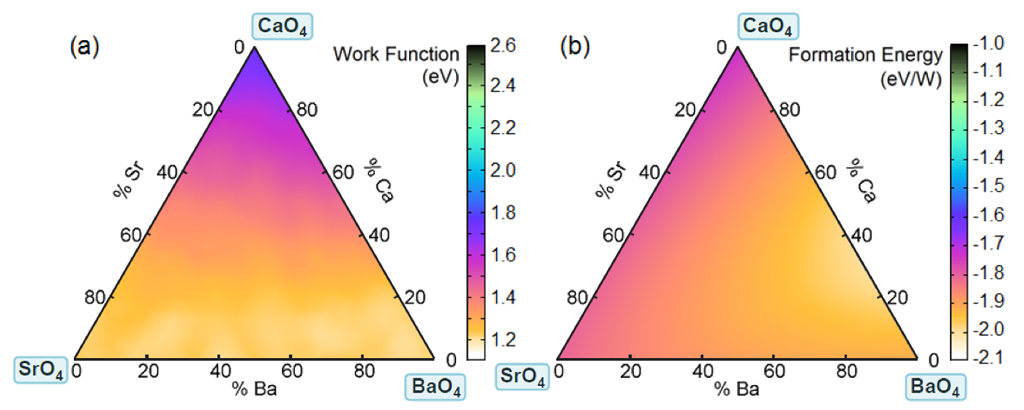
The compositional screening for both stability and work function allows for determination of a simultaneous optimum: films with low work function and yet good stability are obtained with a high Ba-content ($\gtrsim$80%) and some Ca-content, which roughly is in agreement with empirical experimental findings [find more information here: Chou, Voss, Vojvodic, et al., J. Phys. Chem. C 118, 11303 (2014)].